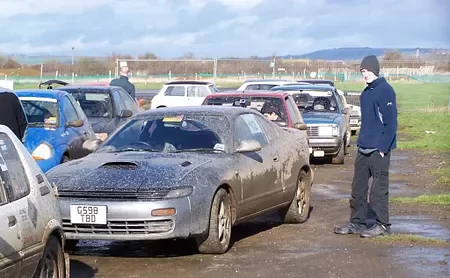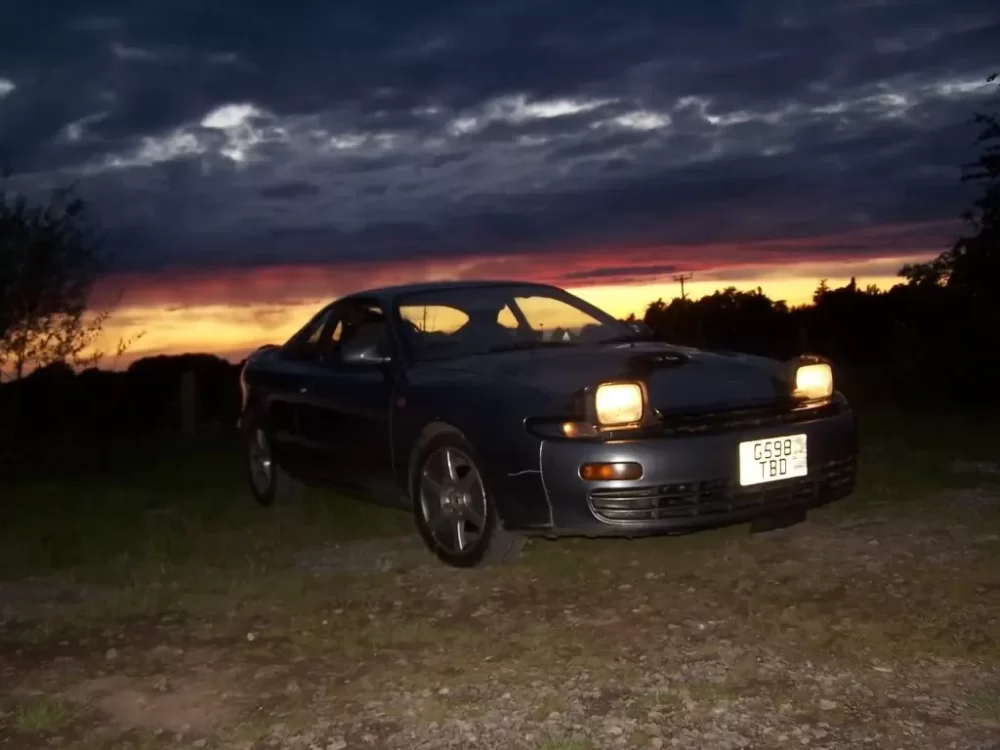-
Posts
4,368 -
Joined
-
Last visited
-
Days Won
109
Content Type
Profiles
Forums
Events
Gallery
Store
Collections
Everything posted by _Chris_
-
You've shown the back of the new one so I can't compare, but I'm guessing you have a misalignment (probably what shredded the belt) and it's down to the rubber for the dual mass pulley coming unstuck. If you've tried checking timing like this, it's probably miles out. Don't go for a solid pulley, as some do, or crank failure may well follow.
-
I'd be surprised if anything changed in 1998. If it became law in 1998, manufacturers would have known years in advance and switched earlier so they weren't left with stock they couldn't sell.
-
I thought the same many, many years ago when I modified my old escort rally car fuel tank to move the fuel outlet away from just behind the rear wheel. Half an hour flushing through with water, then welded a plate over the exit hole. Near the end, I accidentally blew a hole and there was a quick high pitched pop and I heard a rustle in the nearby hedge. When I'd finished, I realised the filler cap was missing - I found it under the hedge where I'd heard the rustle. I then went to refit the tank and found it was now too big to fit back where it had been, especially the flat sides which were now curved outwards like a ballon.
-
I've never seen a 17p price difference before when I've looked. I don't normally buy it so I can't say exactly.
-
Seems the petrol companies are profiteering for the 'just in case' mentality. £1-50 for V-power today in my local Shell. Normal unleaded was £1-33 Thieves.
-
And if they do, run away.
-

Mobile mechanic or garage Near East London/ Essex
_Chris_ replied to Sid2gr8's topic in General Celica Discussion
I've heard good reports of Japex near Watford. I seem to remember someone from here tried them a few weeks back and was pleased. -
I'd hazzard a guess that coping with E10 was made a legal requirement in Europe in 98, therefore a blanket statement.
-
Not sure how up to date this is, it has no indication of when it was posted. http://www.ethanil.co.uk/league-table/ Past rumours lead me to believe that tesco 99 gets it's increase in RON from using more Ethanol compared to Vpower, therefore Vpower produces more power and gives better economy (for the reasons above). Since it isn't in the league table above, maybe it does indeed use the maximum 5% currently allowed.
-
Stoich afr of Ethanol is 9, petrol is 14.7. For mixtures, it's a linear scale. By my sums that makes 14.1 for E10 so about 4% more fuel needed. Closed loop systems will compensate and will lose ecconomy. Open loop systems will run slightly weaker. Since open loop tend to run rich, this is possibly a benefit. The danger is open loop with aftermarket mapping with safety margin removed.
-
If 5% ethanol doesn't rot fuel lines, why should 10%. IMO the biggest danger is to GT4 owners with aftermarket ecus with less safety margin. Ethanol will run weaker on an open loop map. Ethanol has a higher RON which should reduce detonation, however I suspect they will just reduce the other octane boosters so no overall increase.
-
Having come from years of owning escorts and talbots as my toys, I noticed a massive difference in the quality of steel used by Toyota, both for body metalwork and fixings. On a ford, a body panel would go from a stone chip to a hole in a year or 2, and leaving any surface rust when repairing would mean doing it again within a couple of years. Very different story on the Celica. Likewise bolts which have been there for 20 years just take half a turn with a breaker bar and out they come with fingers, very different from bolts which are rusted solid within a year. This is why I always clean & re-use original bolts rather than fitting new aftermarket ones. Even plated bolts rust quicker than original Toyota.
-
It will be a vibration damper for the same reason as dual mass crank pulleys. Any spring plus mass combination (and metal is springy) will resonate at a particular frequency. In the case of driveshafts, this will be a certain speed. If kept at that speed constantly and without the damping, the flexing of the metal will lead to fatigue and snapped driveshaft. The big question is what speed is the resonance, and how long do you spend driving at that speed. A very informative thread on the subject. http://www.gt4dc.co.uk/forum/viewtopic.php?f=13&t=6120&hilit=resonance
-
If you passed the test in 2013 then I'm guessing you're fairly young so worth investing the time and money for the extra entitlement you'll find useful for the rest of your life. I certainly have, it makes so many things so much easier. Trailers don't need tax, MOT or insurance unlike an extra vehicle which would otherwise be needed for occasional larger loads.
-
The question is one better determined by looking at the government guidance. You licence should state what you are allowed to drive. My memory is that from 1997, you were only allowed to tow tiny trailers (200Kg or 400Kg from memory) without taking a separate trailer test, however: https://www.gov.uk/towing-with-car NOTE - MAM includes what the vehicle / trailer is rated to carry, not the actual weight. i.e. an empty transit is stil 3500Kg. This is the spanner in the works. A trailer rated to carry a 1.5 tonne car (Celica) is likely to have a MAM of at least 2.5 Tonnes to include the trailer. Since, almost universally, a tow car must weigh at least as much as the trailer gross weight, this would leave you needing a total weight of at least 5 tonnes. I think there is a small loophole in that some 4x4 / landrovers are classed as agricultural vehicles which have different rules, however they may also require a different licence category. There is potentially another option of using an A frame such that the towed Celica becomes a trailer and will therefore just be 1.5 Tonnes. This would require it to be a braked trailer, and therefore you would need to find a way to splice a trailer braking mechanism (done from the tow hitch) to the car brakes. This could potentially be a mechanical mechanism (cable) from tow hitch to brake pedal, or it could be a hydraulic master cyclinder at the tow hitch plumbed into the braking system, neither of which would be an easy option to do in a professional manner. Be aware the police are quite hot on towing regulations these daya and stops into checkpoints are fairly frequent (I've been pulled in a couple of times). Penalties for being over-weight or not in accordance with licence are huge (potentially licence losing). The best option is to do a towing course / test as it's a one off and will be useful for the rest of your life. To be fair, there is a lot to learn which us oldies have had to learn the hard way. Thankfully in my case, I've erred on the cautions side so have never come a cropper from my mistakes, just soiled a few clothes.
-
There are also rubber fuel lines in the tank and under the bonnet, plus injector seals. That doesn't necessarily mean they're natural rubber or even a type of rubber affected by Ethanol. From memory, copper is one of the worst affected materials, although that may be for methanol.
-
Was the non-runner a celica ? Bearing in mind we've been running E5 for years which contains ethanol, I would expect to have had problems by now. Also bear in mind that rubber perishes with age anyway, and being still is often worse than being flexed. Tyres are a classic example.
-
I can try to get photos tomorrow, not got a Celica at home at the moment. My memory tells me that methanol is the really nasty one, Ethanol not so bad. If the system copes with 5% ethanol, then I doubt it would have a problem with 10%.











